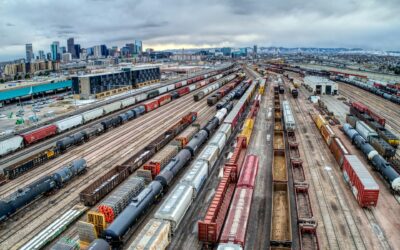
Here’s a sampling of what it is important to know.
The good news first:
- The U.S. Department of Transportation (USDOT) has allocated $53 billion for projects to modernize America’s highways.
- $240 million is available for ports in 19 states.
- $3 billion will flow to projects in 3,000-plus airports.
- $65 billion is available for affordable housing in all jurisdictions.
- $55 billion has been designated for water infrastructure projects and more than $7 billion is earmarked for clean water projects.
- There is a plan to replace every lead pipe in the country so that citizens can be assured of clean, safe water.
- The Environmental Protection Agency (EPA) will disburse $1 billion for projects designed to clean up 49 Superfund sites in 24 states.
- A program has been established to cap and plug orphaned oil and gas wells that are polluting air quality.
- The Department of the Interior has funding for wind projects.
- The Department of Energy will allocate new funding for projects to strengthen the country’s power grids.
- The Bipartisan Infrastructure Bill includes the largest investment in America’s bridges since the creation of the Interstate Highway System. Currently, more than 45,000 bridges are in critical need of repair, and $40 billion in funding is available.
- Broadband funding will connect rural communities to the Internet, and there is more funding for technology modernization.
And there is news that is not so good:
- None of the funding is moving as quickly as had been hoped.
- Rules related to how the funding can be spent and what type of projects qualify for funding are still being developed.
- There will be significant compliance reporting requirements when funding is allocated for projects.
- Early funding allocations are being routed through governor’s offices in all states. That will slow down the process, and some fear it creates risk of political influence.
- Most public officials are stretched to the limit already, and identifying infrastructure project leaders, preparing for compliance reporting, and developing civic outreach plans could slow project launches even more.
- Congress still could impact some parts of the infrastructure legislation.
But all in all, the news is very good! America’s infrastructure will be enhanced in an historic way, and the resulting economic stimulus will be felt throughout the country. Here are examples of what is happening throughout the U.S.
Bridges
Over the next five years, USDOT’s Bridge Formula Program will distribute $27 billion for at least 15,000 bridge projects. On January 14, the department announced the first annual allocation of $5.3 billion. Now, state and local officials can prioritize critical bridge needs and select private partners to launch the projects.
Pennsylvania will receive $1.6 billion in federal funding for 3,000 eligible bridge projects. The John Harris Memorial Bridge project is one of the first large projects that has traction. Project costs to repair the bridge’s structural integrity are estimated between $500 million and $650 million.
Missouri will use part of its 2022 allocation of $97 million for the Shannon 19 bridge project. This work will involve repairing or rebuilding bridges along Route 19 and the Ozark National Scenic Riverways in Shannon County. The environmental assessment stage is underway, but construction will follow quickly after that is finalized. Project costs are estimated to be $18 million. Missouri will receive $484 million for statewide bridge projects over five years.
Officials in Kentucky received the state’s first allocation of $88 million for 2022, which is only part of the state’s $438 million total. Plans have been announced for the Brent Spence Bridge in the city of Frankfort. The project will include construction of an entirely new bridge, and $130 million in state grants is also available for the project.
The five-year funding allocation for Ohio is $483 million with $97 million available in 2022. One likely project will involve repair work on Cincinnati’s Brighton Approach Bridge. The deteriorating bridge spans the length of the city’s Central Parkway.
A sum of $1 billion is allocated for Louisiana’s bridge projects. Of that amount, $203 million is appropriated for 2022. Private-sector contractors can expect projects such as the $42 million Paris Road Bridge project. The bridge connects New Orleans East and St. Bernard Parish. Solicitations for construction work could be available as early as April.
Water and Wastewater Infrastructure
In December 2021, the EPA announced its first annual allocation of $7.15 billion through its State Revolving Fund (SRF) programs. Plans to replace lead service pipes, remedy contamination, and provide clean drinking water will begin soon.
The Palmdale Water District in California will seek private-sector partners for its high priority Groundwater Augmentation Program. The plan involves developing a greater supply of water through new and more sophisticated treatment, recycling, and storage facilities. This $74 million water infrastructure improvement plan is under review, and solicitations are being planned.
In Brookeville, Maryland, the infrastructure funding will help officials realize a longstanding water infrastructure goal. Some of the funding will be used for planning, design, and renovation work on Reddy Branch Wastewater Pumping Station where 12,800 feet of force main must be replaced. Project costs are estimated at approximately $25 million.
The state of New Jersey has appropriated funding to address contaminants in drinking water. Some of the state’s allocation of $169 million for water infrastructure will be used to construct a new water treatment facility estimated at $47 million.
North Dakota’s list of critical water infrastructure needs also will be addressed with infrastructure funding, and several projects are already planned. The city of Washburn’s water treatment plant will be upgraded, and a pipeline will be expanded. Improvements include construction of a new lift station and installation of reverse osmosis treatment technology. Officials have indicated that the $46 million project could be out for bid by April.
Electric Vehicle Infrastructure
The infrastructure bill has a combined $7.5 billion available for construction of 500,000 electric vehicle (EV) charging stations. Some states have billions more in funding for EV charging stations from other sources as well.
However, the projects are funded, EV charging stations will create room for private participation. The city of Hutchinson, Minnesota, has announced renovations to the Hutchinson Area Transportation Services facility for EV charging stations. Remodeling work and new construction for the 36,000-square-foot facility has a projected cost of $7.1 million.
Infrastructure projects are moving, so private-sector contractors should lose no time whatsoever in getting involved.







